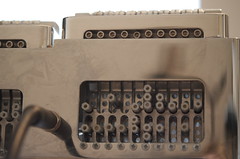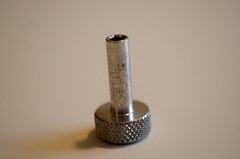How do you tune a steel guitar? Here is a little post on how I tune my guitar and train my ear at the same time. Maybe some day I will be able to tune my guitar by ear.
There many different ways you can tune a steel guitar. I will describe the method I learned.
We will discuss tuning the E9 neck which from first string to 10th string are F#, D#, G#, E, B, G#, F#, E, D, B.
We start tuning using the tuning head first. We will worry about tuning the pedals and levers later. Using your favorite tuner, connected to your guitar I start with strings 4, 5, and 6. It is better to tune slightly sharper than flat. I use a Peterson Flip Strobe tuner. Others use a chromatic needle tuner.
My tuner comes with presets for both E9 and C6 neck. You can build your own custom presets, however, I have not had the need to do so up to this point. Make sure you have selected E9.
I start with string 4 which is E. Once I have this string tuned I pick it a few times and try to memorize the sound of E. The reason I do this is I want to eventually be able to tune by ear and once E is established all other strings can be tuned. I then tune the 5th String which is B. Once tuned, I move on to the 6th string which is G#. Once I have all three of these strings tuned I pick them one at a time starting with the 6th string, then 5th string and finally the 4th string. Sound ok? Lets move on.
Now, the 8th string is also E, so I do a little practice here. I try to tune the 8th string by picking the 4th string and trying to tune the 8th string. When out of tune they will sound like they are out of phase. Raise or lower the 8th string until they sound in phase. Now you can also practice with the 5th and 10th string as they are also both B and we have already tuned the 5th string. Once you have done this you have the string group 6, 8, and 10 tuned. Pick them in order starting with the 10th string then the 8th string, and finally the 6th string. Does it sound ok? Double check yourself with the tuner. Now you have strings 4, 5, 6, 8, and 10 tuned.
Our next group is strings 3, 4, and 5. At this point only 3 is out of tune and since both strings 3 and 6 are G# you can practice tuning by ear again and check with the tuner. Or you could pick strings 5 and 6 individually and tune G# so the string groups sounds right and double check yourself with the tuner.
The last two strings to tune are the 1st and 2nd strings. Since I have no comparison for the 2nd string I use the tuner. The first string is F# so you can use any of the other methods described.
Now you have tuned your guitar to the open tuning. Next is to tune the pedals and levers. This should not be necessary very often. I have had my Mullen for over 3 years now and have nor needed to tune the pedals or levers.
The tuning of pedals and levers is done from the changer head position. There will be a series of tuning nuts as depicted in the picture below.
If you count there are 10 positions going horizontally. This is for each of the strings. Each of the nuts corresponds to a lever or pedal pulling on that string. When I press the A pedal down the 3rd and 6th nuts move in and out. When I press the B pedal then strings 5 and 10 nuts move. You will need a tuning knob as depicted in the following picture.
This tuning knob will fit onto the nuts described above. Turn the knob to sharpen or flatten the note while you have a pedal or lever engaged.
Once you have tuned all the pedals and levers there is one final step. Go back to your open tuning and check to ensure that all strings on the open tuning are still in tune. If so then you are good to go. If not then you need to tune the open strings again and then check the splits (pedals and levers) are in tune. You may have to compromise a bit.
I hope this helps. Send me feed back, questions or comments.





No comments:
Post a Comment